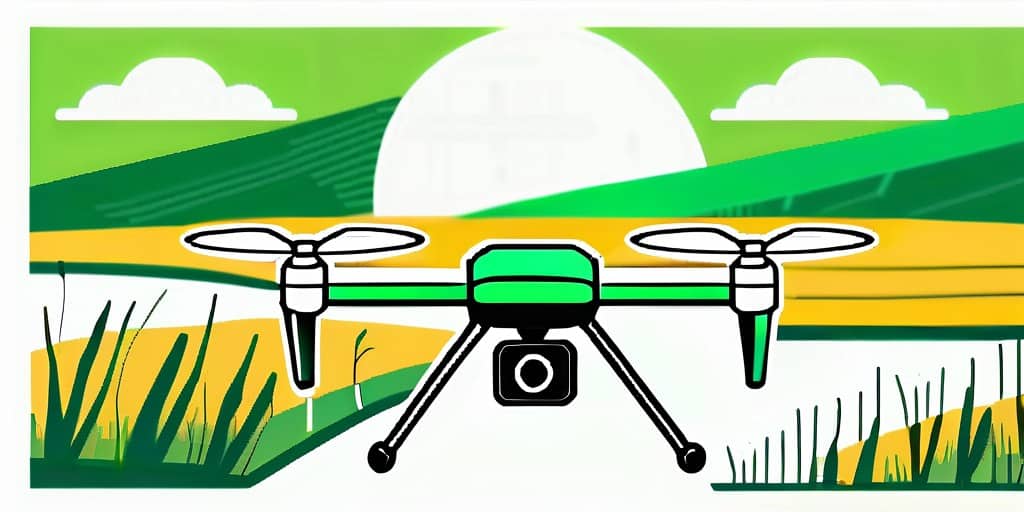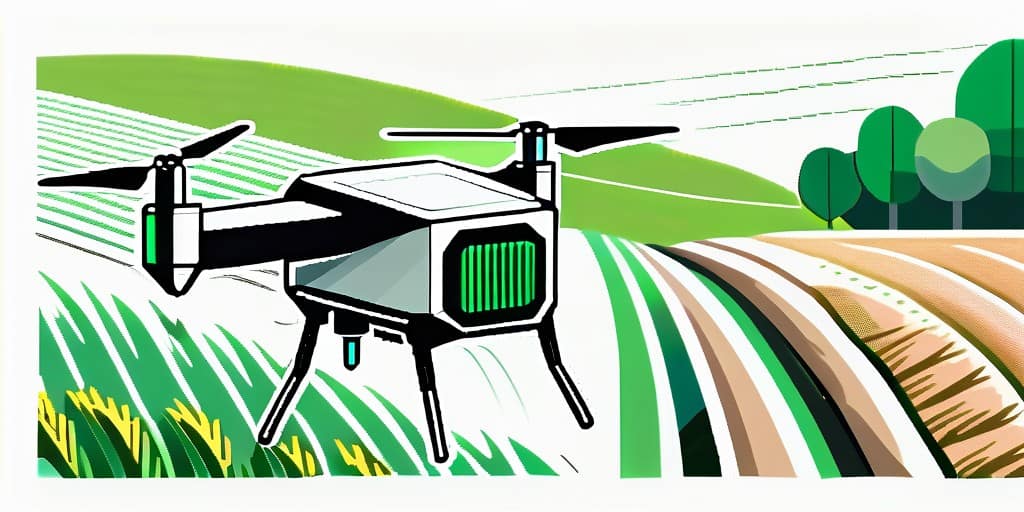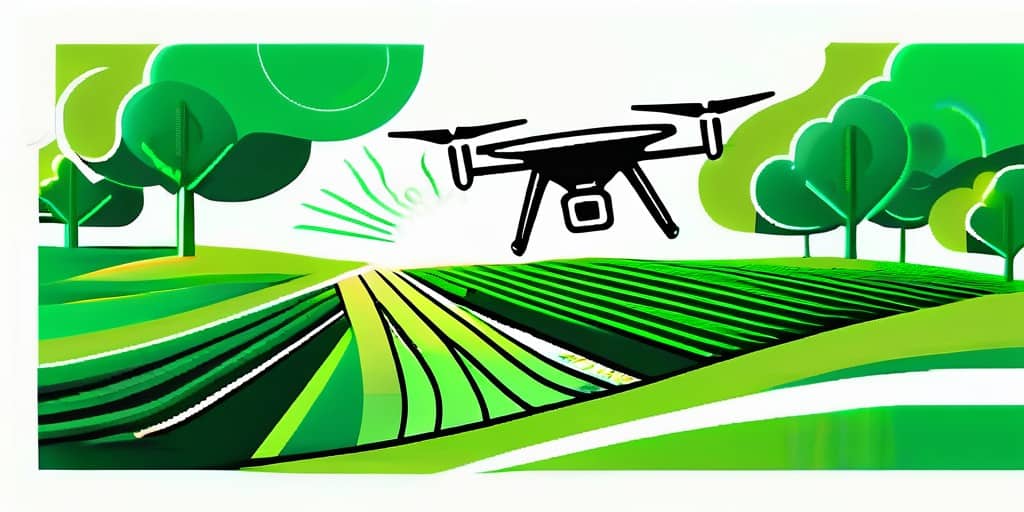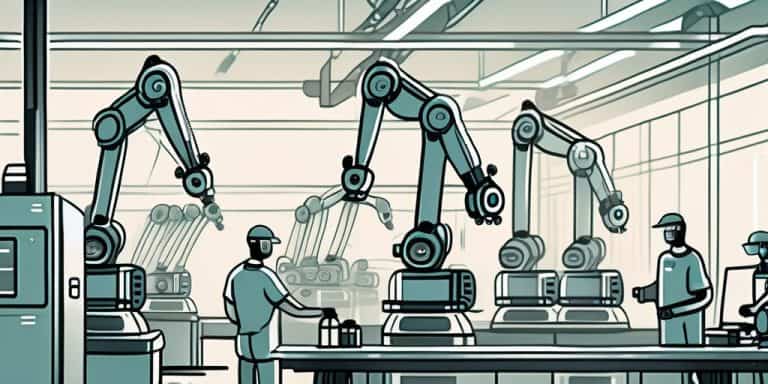
Examples of Speech Synthesis in the Legal System
Discover how speech synthesis technology is revolutionizing the legal system with real-world examples.

Speech synthesis, also known as text-to-speech technology, has become an integral part of various industries. Agriculture, in particular, has witnessed significant advancements in the field of speech synthesis, making it more efficient and accessible for farmers and agricultural professionals. In this article, we will explore the understanding, role, and applications of speech synthesis in agriculture, as well as its future implications and the overall impact it has on the industry.
Before delving into the specifics of speech synthesis in agriculture, it is essential to have a clear understanding of what speech synthesis entails. Speech synthesis is the process of converting written text or computer-generated content into spoken words. Through the use of advanced algorithms and linguistic models, speech synthesis technology can mimic human speech patterns, tones, and inflections.
This technology has seen remarkable progress in recent years, enabling the development of more natural and expressive voices. Utilizing machine learning techniques, speech synthesis algorithms can adapt and refine their output, creating a more nuanced and human-like auditory experience.
Speech synthesis has become a powerful tool in various industries, revolutionizing the way humans interact with technology. By providing a voice to written text, speech synthesis has opened up new possibilities for communication and accessibility.
In its simplest form, speech synthesis involves transforming written text into spoken words. This can be achieved through various algorithms, such as concatenative synthesis, formant synthesis, or parametric synthesis.
Concatenative synthesis involves piecing together pre-recorded speech segments to create an output. By carefully selecting and combining these segments, the algorithm can generate speech that sounds natural and coherent.
Formant synthesis, on the other hand, focuses on generating speech through mathematical modeling of the human vocal tract. By manipulating the frequencies of different formants, the algorithm can produce speech sounds that closely resemble human speech.
Parametric synthesis uses trained models to generate speech based on a set of acoustic parameters. These models learn from a large dataset of human speech and can generate speech that is highly realistic and natural-sounding.
Regardless of the specific method used, speech synthesis technology has proven to be an invaluable tool in agriculture for both information dissemination and data collection.
Speech synthesis has found applications in various sectors, including telecommunications, assistive technology, and entertainment. It enables seamless communication between humans and machines, making interactions more intuitive and efficient.
In agriculture, speech synthesis technology enhances the accessibility and ease of use for farmers, providing them with real-time information and analysis. For example, farmers can use speech synthesis to receive vocalized weather updates, crop prices, and pest control recommendations.
Additionally, speech synthesis has become an integral part of devices such as navigation systems and virtual assistants. These technologies have extended their reach into agriculture, allowing farmers to receive vocalized guidance while working in the fields or managing their operations.
Imagine a farmer in the middle of a vast field, trying to navigate through rows of crops. With the help of speech synthesis, they can simply ask their virtual assistant for directions and receive step-by-step vocalized instructions, allowing them to focus on their work without the need to constantly refer to a screen or map.
Speech synthesis technology also plays a crucial role in data collection and analysis in agriculture. By vocalizing data insights and analysis, farmers can easily understand and interpret complex information, enabling them to make informed decisions about their crops, irrigation, and fertilization.
Furthermore, speech synthesis can be used to create interactive and engaging educational content for farmers. By converting written materials into spoken words, farmers can access valuable information and learn new techniques while working in the field or during their daily routines.
In conclusion, speech synthesis technology has transformed the way we communicate with machines and has found numerous applications in agriculture. By providing a natural and human-like voice to written text, speech synthesis enhances accessibility, efficiency, and data analysis in the agricultural industry.
The integration of speech synthesis in agriculture has proved to be a game-changer for the industry, providing farmers with a new level of convenience and efficiency. Speech synthesis technology has the potential to transform traditional farming practices and revolutionize the way farmers manage their crops and livestock.

Agriculture, being a labor-intensive industry, demands constant monitoring and timely interventions to ensure optimal productivity. However, farmers often face challenges regarding time constraints and the need for rapid decision-making. This is where speech synthesis technology comes into play. By vocalizing important information, such as weather updates, soil conditions, or machinery status, farmers can access crucial data hands-free, leaving their focus on the field.
Furthermore, speech synthesis technology enables farmers with visual or physical impairments to overcome accessibility barriers, enabling them to actively participate in agricultural activities. This inclusivity fosters diversity within the industry and ensures that every farmer has the tools needed to succeed.
Imagine a farmer working in the field, surrounded by rows of crops. With speech synthesis technology, they can simply ask, “What is the current soil moisture level?” and receive an immediate response. This real-time feedback allows them to make informed decisions on irrigation, ensuring that each plant receives the right amount of water, leading to healthier crops and increased yields.
Moreover, speech synthesis technology can also provide farmers with updates on the status of their machinery. For example, they can ask, “Is the tractor running smoothly?” and receive a vocalized response indicating any potential issues. This proactive approach allows farmers to address maintenance needs promptly, minimizing downtime and maximizing efficiency.
The influence of speech synthesis in agriculture can be seen across various domains, ranging from crop management to livestock monitoring. Let’s explore some of the key applications of speech synthesis technology in agriculture:
In the realm of crop management, speech synthesis technology assists farmers in monitoring and addressing critical parameters. By vocalizing essential details such as soil moisture levels, nutrient requirements, and pest infestations, farmers can make informed decisions regarding irrigation, fertilization, and pest control measures. This real-time auditory feedback improves overall crop health, maximizes yields, and reduces resource wastage.
Furthermore, speech synthesis technology can also provide farmers with updates on market trends and prices. By simply asking, “What is the current market price for corn?” farmers can receive vocalized information, allowing them to make informed decisions about when to sell their produce, maximizing profitability.
Speech synthesis technology can even assist farmers in identifying specific plant diseases or nutrient deficiencies. By vocalizing symptoms and possible remedies, farmers can quickly address issues and prevent further damage to their crops.
In the livestock sector, speech synthesis technology plays a crucial role in ensuring animal welfare and farm productivity. Farmers can receive vocalized updates on factors like animal health, feeding schedules, and breeding cycles. By utilizing speech synthesis technology in conjunction with data tracking systems, farmers can closely monitor their livestock, identify anomalies, and take proactive measures to maintain optimal conditions.
For example, if a farmer wants to check the health of their cows, they can simply ask, “Are there any signs of illness in the herd?” and receive a vocalized report on any unusual behaviors or symptoms. This allows farmers to take immediate action, preventing the spread of diseases and ensuring the well-being of their animals.
Speech synthesis technology can also assist in managing feeding schedules. Farmers can ask for vocalized updates on the quantity and timing of feed distribution, ensuring that each animal receives the right amount of nutrition. This precision in feeding promotes healthy growth and maximizes the efficiency of feed utilization.
Furthermore, speech synthesis technology can help farmers monitor breeding cycles in livestock. By vocalizing information about the optimal time for mating or insemination, farmers can ensure successful reproduction and maintain a healthy and productive herd.
In conclusion, speech synthesis technology has brought significant advancements to the agricultural industry. By providing farmers with hands-free access to crucial information and enabling inclusivity, it has revolutionized the way farmers manage their crops and livestock. The applications of speech synthesis in crop management and livestock monitoring have improved overall productivity, efficiency, and animal welfare. As technology continues to evolve, we can expect further innovations in the intersection of speech synthesis and agriculture, driving the industry towards a more sustainable and prosperous future.
Looking ahead, the future of speech synthesis in agriculture holds tremendous potential. Advancements in artificial intelligence and machine learning will continue to refine and expand the capabilities of speech synthesis technology. Predicted trends indicate that speech synthesis will become even more natural and indistinguishable from human speech, enhancing the overall user experience.

One of the key anticipated trends in speech synthesis is the development of localized and regional accents. Currently, speech synthesis models often lack the ability to accurately reproduce distinct regional accents, which can affect usability and comprehension. However, ongoing research and development aim to address this limitation, ensuring that speech synthesis technology adapts to the specific linguistic nuances of different regions.
Another significant trend is the incorporation of emotional and contextual cues into speech synthesis. By infusing synthesized voices with appropriate emotions, such as urgency or reassurance, speech synthesis technology can better convey information in a manner that aligns with the needs of farmers, ultimately enhancing the user experience.
As with any emerging technology, speech synthesis in agriculture presents its own set of challenges. A key consideration is the availability and reliability of internet connectivity in rural farming areas. Robust and consistent network infrastructure is crucial for seamless data transmission and access to speech synthesis services. Governments and private stakeholders need to work together to ensure comprehensive network coverage, particularly in agricultural regions.
Additionally, ensuring the privacy and security of data transmitted and processed through speech synthesis systems is of paramount importance. Encryption protocols and stringent data protection measures must be implemented to safeguard sensitive agricultural information from unauthorized access or manipulation.
In conclusion, speech synthesis technology has emerged as a transformative tool in the agricultural landscape. It has revolutionized information dissemination, improved accessibility, and enhanced productivity for farmers. By integrating speech synthesis into various aspects of agriculture, from crop management to livestock monitoring, farmers are empowered with real-time data and actionable insights.

Speech synthesis technology streamlines agricultural operations, saving time, and enabling more efficient decision-making. The ability to vocalize relevant information ensures that farmers can access critical data while remaining focused on their day-to-day tasks. Moreover, speech synthesis enhances the inclusivity of agriculture, making it accessible to farmers of all abilities.
Looking ahead, the future of speech synthesis in agriculture is promising. Advancements in technology will continue to refine speech synthesis, making it more natural and tailored to specific regional needs. By addressing challenges such as connectivity and data security, speech synthesis holds the potential to significantly transform the agricultural sector, revolutionizing farming practices and bolstering global food production.
As we witness the wide-ranging applications of speech synthesis in agriculture, it becomes evident that this technology opens new doors for innovation and efficiency. By embracing speech synthesis, farmers can amplify their capabilities, optimize their operations, and contribute to the sustainable growth of the agricultural industry.



Discover how speech synthesis technology is revolutionizing the legal system with real-world examples.

Explore how speech synthesis technology is revolutionizing the manufacturing industry with real-world examples.

Explore how speech synthesis technology is revolutionizing customer service with real-life examples.
